The Etruscans of Iron-Age Italy dominated the northern Italian peninsula in the centuries before the ascendency of Rome. And it had a tradition of taurs. Scholars refer to these mythological beings exclusively as "centaurs." But many are pretty ambiguous. Join me in a look at the clear centaurs and possible liontaurs of a culture that dominated Rome back in the day.
This perfume vase, dating to the sixth century BCE, is a terracotta alabastron currently at the Metropolitan Museum of Art in New York City. It features a tableau of Herakles and centaurs on its upper portion. Even I have to admit this looks like a centaur. Check out the horse tail. Here's the relevant portion of the vase:
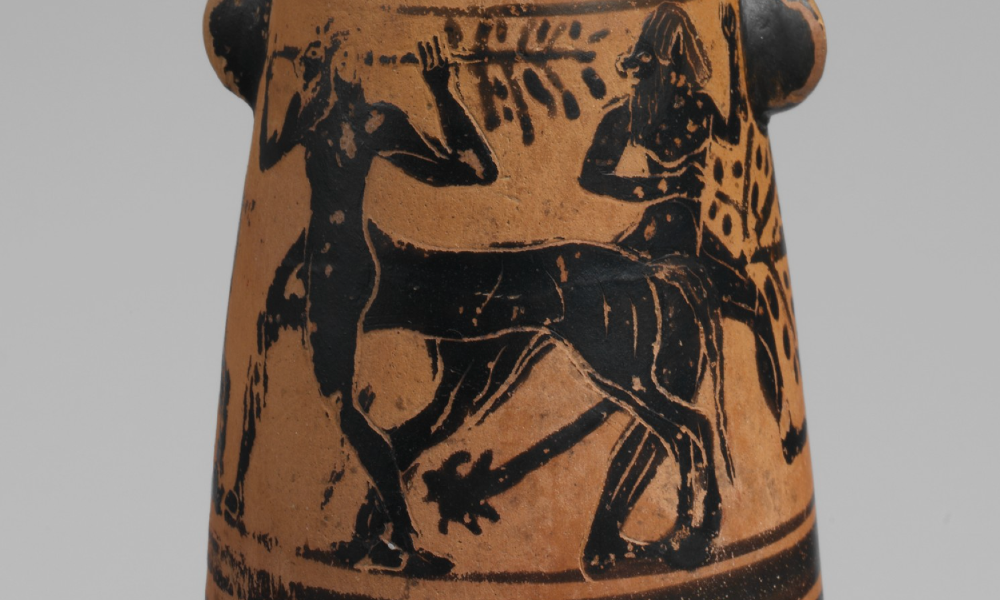
Click to embiggen.
Here's another in the same style, evidently for sale at one point at Hixenbaugh Ancient Art, a gallery in New York City.
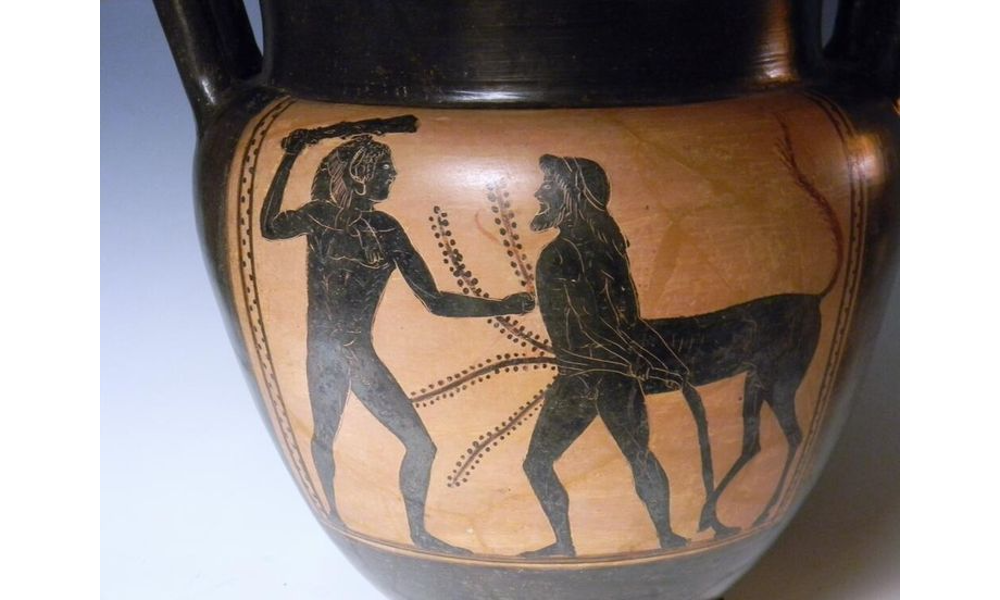
Here's a link to another from the Met, definitely a centaur, of the same period.
The Museum of Fine Arts Boston holds in its collection a bronze figure of a taur, dating to 525–500 BCE. The museum lables this a centaur, but I disagree. Certainly, with those human forefeet, if is neither a centaur nor a liontaur. The bck feet are ambiguous. But if you look at that tail! Definitely a feline tail, not an equine tail! I think it is more lion than horse.
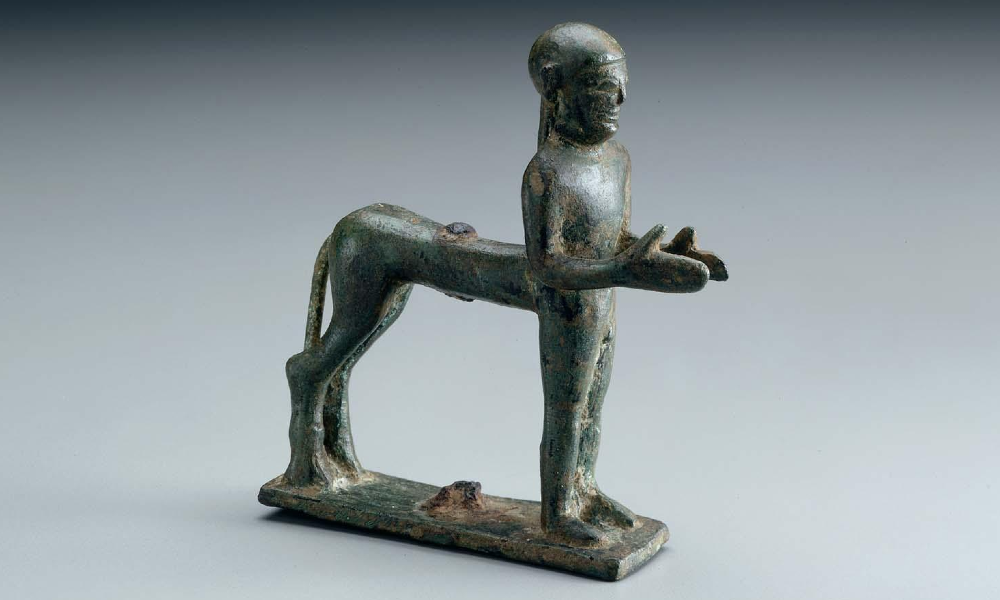
Click to embiggen.
A more well-known Etruscan taur (it has its own Wikipedia article) is the so-called "Centaur of Vulci," 590–580 BCE. It resides in the Museo Nazionale Etrusco di Villa Giulia (National Etruscan Museum) in Rome. The broken statue of a taur, missing legs and evidently carved without a tail, seems to me as likely to be a liontaur as a centaur. It looks like this:
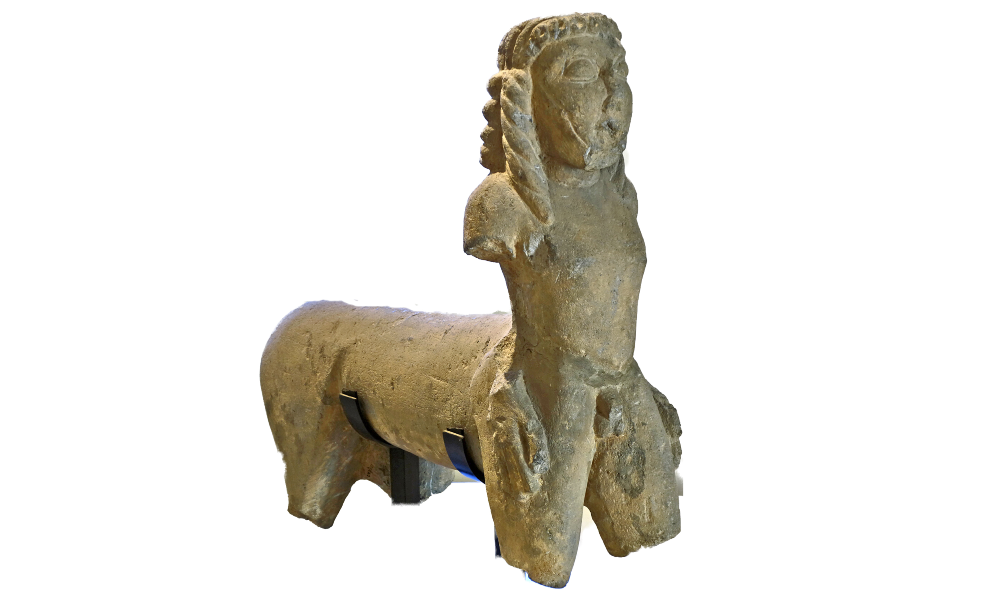
Click to embiggen.
In my scouring of the Internet, I came across this Etruscan bronze taur offered for sale by famed auction house Christie's: AN ETRUSCAN BRONZE CENTAUR CIRCA LATE 5TH-4TH CENTURY B.C. Honestly, the tail and hooves look more equine to me, but I was fascinated by this in the description (emphasis mine):
the centaur with a full equine body, rearing up on his hind legs, preparing to hurl a rock firmly gripped in his extended right hand, wearing a belt at the merge of his human torso and equine waist, an animal skin over his left arm and shoulder, its feline face shown frontally on his chest, with a pointed beard and bulging eyes, his hair pulled up into a small top-knot and projecting to a point at the back of the head
This centaur has a cat face on his chest! What does that mean? Why is it there? Did a Hello Kitty shirt fall through a warp in time and end up memorialized on this centaur? It reminds me of the "grotesques" of medieval manuscripts (like
this one that I wrote about
here).
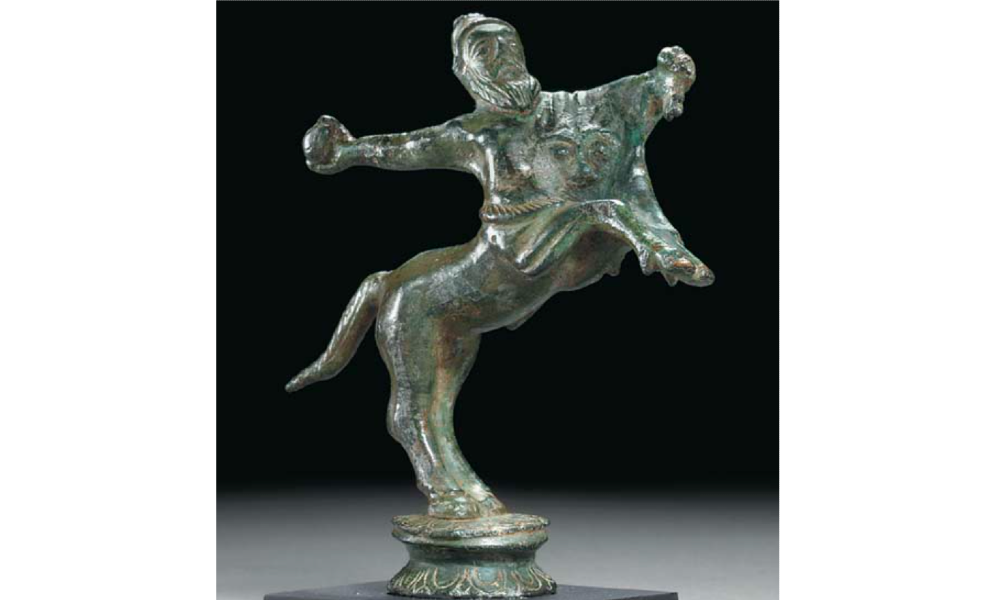
Click to embiggen.
Here's a final example, though the only source I have for it are stock art houses, like this one: Etruscan Jar stamped with Centaurs and winged lions, sixth century BC. Liontaur or centaur? The feet on the winged lions do not match the feet on the taurs. Ambiguous at best.
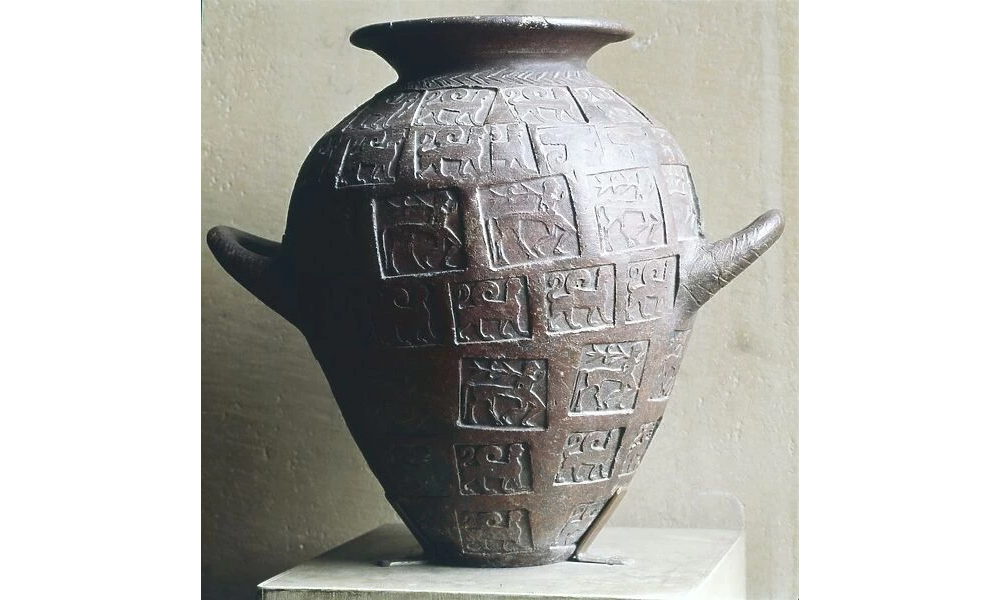
So what's the bottom line? Sadly, I've found no unambiguous wemics in Etruscan art. Maybe a couple are possible, but certainly none are clear cut. No question, however, that the taur form was commonly known in Etruscan myth and culture.